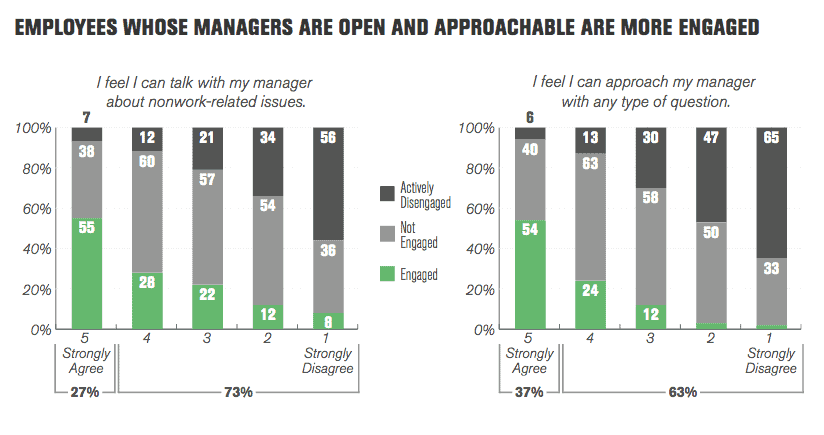Do you want to be average or GREAT? Are you satisfied with just doing the bare minimum, or do you strive to make a significant impact? As a manager, settling for mediocre work from your team is not enough. In today’s high-pressure, high-tech environment, where motivated individuals can make tremendous contributions, you can’t afford to settle for “good enough.”
The 10/10/10 rule for one-on-ones may seem simple and convenient, but it falls short of what you and your team truly need. Let’s explore why this rule is for mediocre managers and discover how you can have more productive and engaging one-on-ones.
Why the 10/10/10 Rule is for Mediocre Managers
If you’re already having one-on-ones with your team, that’s a good start. However, the 10/10/10 rule limits the potential of these meetings. Here’s what’s wrong with it:
1) 10 minutes isn’t enough for them.
Have you ever had a significant problem in your life that required more than 10 minutes to solve? Most likely, the answer is yes. The same applies to your team members. Trivial issues can be addressed in 10 minutes, but the big, thorny problems that cause frustration and disengagement require more time.
Andy Grove, former CEO of Intel, emphasized the importance of giving enough time to tackle these issues. He stated, “The subordinate must feel that there is enough time to broach and get into thorny issues. If you had a big problem that you wanted to kick around with your supervisor, would you want to bring it up in a meeting scheduled to last only fifteen minutes? You would not.”
By dedicating just 10 minutes to each team member, you are missing out on vital discussions that can impact their performance and engagement.
2) The structure encourages status updates.
The 10/10/10 rule often leads to conversations revolving around status updates, such as discussing what was done last week, what will be done next week, and any current obstacles. While these updates are valuable, they should not dominate the entire one-on-one meeting.
With limited time, it’s easy to spend the entire meeting on status updates, neglecting more crucial topics. By going beyond status updates, you can uncover more valuable insights and address deeper concerns.
3) 30 minutes may not be enough time.
The total length of the 10/10/10 rule, 30 minutes, often falls short in practice. Meetings tend to run late or get interrupted by reminders for the next meeting. As a result, you may only have around 20 focused minutes for meaningful conversation.
Furthermore, critical discussion topics often arise towards the end of a meeting. This timing issue can lead to rushed conversations or unaddressed issues, as described by Andy Grove as “zingers.”
To overcome these limitations, it’s time to ditch the 10/10/10 rule and adopt a more effective approach to one-on-ones.
How to Have One-on-Ones Like a Pro and Ditch the 10/10/10 Rule
With a few simple tweaks, you can transform your one-on-ones from mediocre to impactful. Here’s how:
1) Set aside an hour.
Booking an hour for each one-on-one allows for more in-depth discussions and ensures you have sufficient time to address any issues that arise. Even if the meeting starts a little late, you can still have a full conversation without feeling rushed.
Giving your team members an hour shows that you value their input and provides them with a safe space to discuss anything that’s on their minds. Building trust and rapport takes time, and 10 minutes will never be enough for meaningful connections.
2) Bring good questions and ask follow-ups.
As a manager, developing your questioning skills is essential. Prepare thought-provoking questions that go beyond surface-level updates. These questions can reveal new insights and help you understand your team members’ goals and challenges.
By actively seeking out problems and digging deeper with follow-up questions, you can stay ahead of issues and make continuous improvements.
3) Cover the full range of topics without time limits.
Break free from the rut of only discussing safe topics and status updates. Use your one-on-ones to explore a wide range of subjects, including career goals, progress, and how you can support your team members’ growth.
Employees, particularly millennials, seek opportunities for growth and learning. By dedicating more time to discussing their careers, you can foster a sense of ambition and hard work in your team.
Don’t settle for mediocre one-on-ones. By ditching the 10/10/10 rule and implementing these simple strategies, you can have more impactful, engaging, and productive conversations with your team members. Remember, the time and effort you invest in one-on-ones can make a significant difference in your team’s performance and overall satisfaction. So, start making these changes today and reap the benefits of effective one-on-ones.
